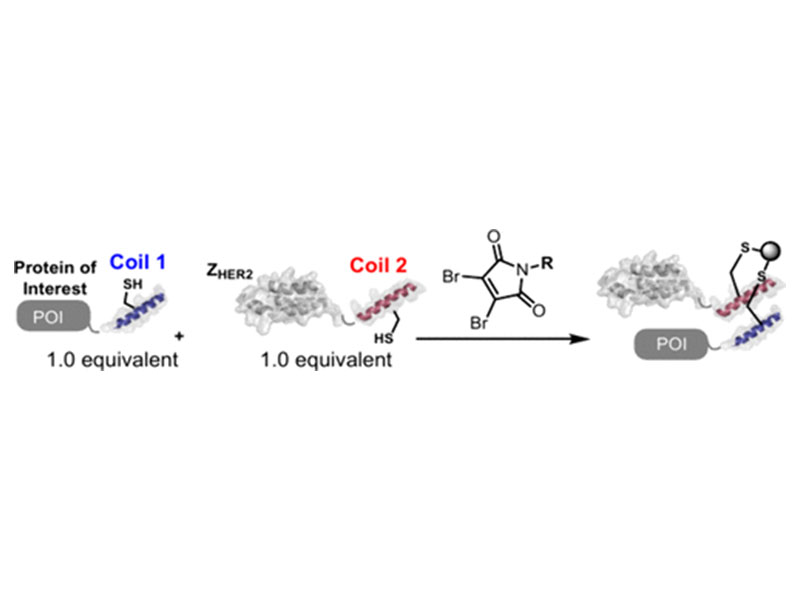
Equimolar Cross-Coupling Using Reactive Coiled Coils for Covalent Protein Assemblies

Equimolar Cross-Coupling Using Reactive Coiled Coils for Covalent Protein Assemblies
Hironori Takeuchi Elee Shimshoni Satish Gandhesiri Andrei LoasBradley L. Pentelute*
Abstract
Biocompatible cross-coupling reactions enable the efficient covalent attachment of large biomolecules at near-stoichiometric ratios, ensuring the stability and integrity of the resulting products. We present an affinity-based peptide platform utilizing coiled coils containing reactive side chains for proximity-driven protein cross-coupling in the presence of a cross-linking agent. This platform supports both chemical synthesis and recombinant expression, using canonical amino acids to generate reactive affinity tags. Employing the E3/R3 coiled coil pair as a scaffold, we design four complementary coils with cysteine residues as cross-linking sites, achieving >90% conversion to covalent heterodimeric coupling products using 3,4-dibromomaleimide. Equimolar mixtures of proteins with reactive coils at their termini yield near-quantitative heterodimeric cross-coupling products. The strategic selection of complementary coiled coil pairs and cross-linking agents enables orthogonal assembly of macromolecules with diverse architectures. This method offers a versatile approach for creating covalent fusion proteins, enhancing their stability and functionality for applications in chemical biology, biotechnology, and medicine.



